Tracing Jurassic Treasures: Diverse Soil and Grape Varieties Produce Boundless Shades and Styles in France’s Jura Mountains. (7-Bottle Package $229)
Jordan Nodel, a treasured patron, perfectly summarized one of this week’s package offerings, Domaine Rolet’s 2018 ‘Rouge Tradition’: “I really enjoyed this bottle. Stylistically it’s often just what I’m looking for: Something with a slight cherry tartness, lively acidity without being overpowering, and not so serious and imposing a wine that I need to think too much if it’s the right time to open the bottle. I often want to feel like I could be drinking a particular wine in a crowded bar in the Marais as opposed to being served in a stuffy restaurant, and this one fits that mood. I had a glass with roast chicken that had a bit of spice to it, and the pairing still felt balanced enough.”
Whatever you are serving tonight, this week’s wine package will walk you through the meal with an ideal pairing for every course, all from the Jura—one of the most diverse and misunderstood appellations in France.
Long before Spielberg was a gleam in evolution’s eye, the Jurassic Park of eastern France was producing unique wines from local varieties like Poulsard and Trousseau, both red, and Savagnin (known locally as Naturé), which is responsible for the region’s idiosyncratic Vins Jaunes, or golden wines.
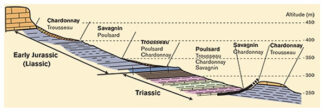
The entire Jurassic era was, in fact, named for tiny Jura; the region’s limestone mountains are representative of the geological developments which occurred around 200 million years ago, and the vine-friendly soil types that predominate here are Jurassic period limestone and marl. About fifty miles north to south, elevations in the appellation vary widely, from the mountainous east, where the topography may reach forty-five hundred feet to the flatter west. The majority of the vines are planted in the Jura are restricted to south-facing slopes in lower-lying land in the west, where the elevation tops out at a thousand feet.
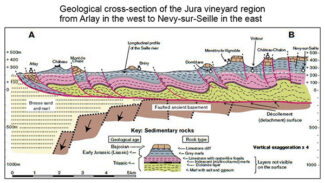
Five distinct AOPs subdivide the Jura; the most important in terms of volume are Arbois and Côtes du Jura, with Crémant du Jura, Macvin and L’Étoile rounding out the quintet.
AOP Macvin du Jura
The most recent region in the Jura to have been granted its own appellation (1991) and the third in France officially recognized as a vin de liqueur. Also called ‘Mistelle,’ such beverages are produced by adding high-strength spirit to unfermented or slightly fermented fruit juice, resulting in a sweet, grapey liqueur, typically between 16 and 22% alcohol by volume. Traditionally served as an aperitif, Macvin is fortified with locally produced Eau-de-Vie de Marc Originaire de Franche-Comté (EDVR), and comes in red, white and rosé, making use of any or all of the Jura’s key grapes—Chardonnay, Savagnin, Poulsard, Pinot Noir and Trousseau. Fittingly, the name ‘Macvin’ is a portmanteau of marc (a neutral spirit made of grape pomace) and ‘vin’.
AOP Arbois
The Jura’s most prolific sub-appellation, Arbois produces both white wine and rosé in great quantities, but has long staked its reputation on reds—about 70% of the Jura’s red wines are produced under the Arbois name. The 2000 acres under vine also contain zones set aside for sparkling wine (Crémant de Jura) and other plots supply fortified Macvin de Jura under its own AOP.
Arbois is hilly, and so situated that the valley slopes catch the morning sunlight and protect vines from winds. The mesoclimate produced by the geography partially explains the regional emphasis on red wines. The appellation covers 13 communes, among them the small village of Pupillin, which contains a patchwork of ‘climats’ that produce wine of particularly high quality. As such, wines from these sites are sold as Arbois-Pupillin.
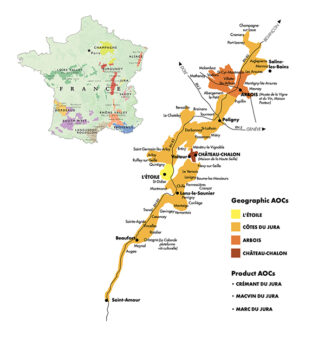
This week’s package offering is comprised of Domaine Rolet’s four featured wines. The quantity of each included is indicated in the write-up about the wine for a total of six bottles at $229.
Domaine Rolet
One of the flagship vineyards in the Jura, Domaine Rolet was created in the early 1940s by Désiré Rolet. When his children sold the 150-acre estate, they wanted new owners who would respect the diverse terroirs on which their property sits, in Arbois, Côtes du Jura, L’Étoile and Crémant du Jura. The torch was passed to the Burgundian group Domaines Devillard, owners of Domaine des Perdrix in Nuits-Saint-Georges and Château de Chamirey in Mercurey, along with the families Flambert and Dupuis. In June, 2018, Cédric Ducoté took over the management of Rolet, and upon his arrival, a commitment to organic agriculture culture was initiated—a transformation which continues to this day. Production is respectable at 350,000 bottles per year.
The meal, as interpreted by the wine of Jura:
(Aperitif with White Vin de Liqueur)
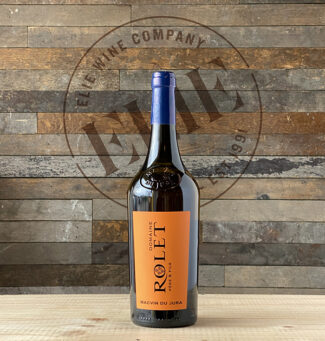 1. AOP Macvin du Jura – Multi-Vintage Blanc ($33) (1 Bottle): 100% Savagnin, a small-berried, thick-skinned varietal not to be confused with Sauvignon Blanc. A late-ripening grape that can still produce dry white wines with good acidity, Savagnin’s flavor profile is typically citrus and floral with occasional tropical lushness. When blended with locally distilled marc and aged in large oak casks for 24 months, the vin de liqueur takes on a heavy amber color and shows exotic and unctuous notes of orange zest, quince and dried apricot.
1. AOP Macvin du Jura – Multi-Vintage Blanc ($33) (1 Bottle): 100% Savagnin, a small-berried, thick-skinned varietal not to be confused with Sauvignon Blanc. A late-ripening grape that can still produce dry white wines with good acidity, Savagnin’s flavor profile is typically citrus and floral with occasional tropical lushness. When blended with locally distilled marc and aged in large oak casks for 24 months, the vin de liqueur takes on a heavy amber color and shows exotic and unctuous notes of orange zest, quince and dried apricot.
(Starter Course with Oxidative White)
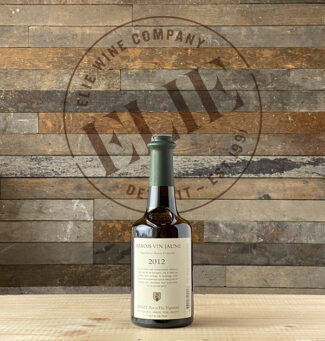 2. AOP Arbois – 2012 Arbois Vin Jaune ($60) (1 Bottle 375 ml): An entirely unique Savagnin personality is uncovered in Vin Jaune, a labor-intensive wine aged under a flor-like cover of yeast. The resultant rich wines are known for their nutty, Fino Sherry-like character, as well their intensity and a lifespan that can exceed 75 years. Rolet’s incarnation shows intense honeyed-walnut and salted almond notes over a wash of dried apple.
2. AOP Arbois – 2012 Arbois Vin Jaune ($60) (1 Bottle 375 ml): An entirely unique Savagnin personality is uncovered in Vin Jaune, a labor-intensive wine aged under a flor-like cover of yeast. The resultant rich wines are known for their nutty, Fino Sherry-like character, as well their intensity and a lifespan that can exceed 75 years. Rolet’s incarnation shows intense honeyed-walnut and salted almond notes over a wash of dried apple.
(Main Course with Dry White)
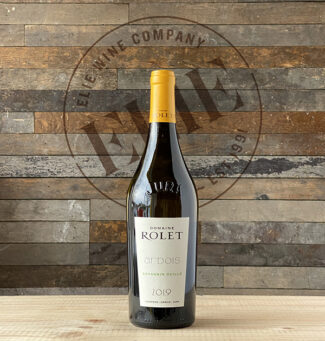 3. AOP Arbois – 2019 ‘Savagnin Ouillé’ ($27) Dry White (2 Bottles): Vin Jaune-styled wine so dominates in the Jura that it is necessary to mention on the label when Savagnin has not been vinified with oxidation. That’s what the word ‘Ouillé’ after ‘Savagnin’ indicates. Grown in grey marl and allowed to fully express its fresh exuberance, this wine is lush and linear, showing spiced mango and ripe peaches behind a mantle of minerality and the region’s characteristic salty notes.
3. AOP Arbois – 2019 ‘Savagnin Ouillé’ ($27) Dry White (2 Bottles): Vin Jaune-styled wine so dominates in the Jura that it is necessary to mention on the label when Savagnin has not been vinified with oxidation. That’s what the word ‘Ouillé’ after ‘Savagnin’ indicates. Grown in grey marl and allowed to fully express its fresh exuberance, this wine is lush and linear, showing spiced mango and ripe peaches behind a mantle of minerality and the region’s characteristic salty notes.
(Main Course with Dry Red)
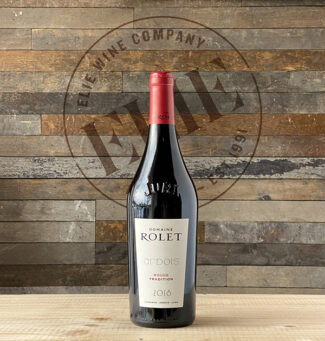 4. AOP Arbois – 2018 ‘Rouge Tradition’ ($23) (3 Bottles):Domaine Rolet vinifies the three varietals in this cuvée (40% Poulsard, 30% Trousseau, 30% Pinot Noir) as mono-grape bottlings, but the blend is essential for the flavors of ‘Rouge Tradition’—spicy cherry, tart cranberry, rich and redolent of rose petals. The vines average 40 years and are grown on red marl.
4. AOP Arbois – 2018 ‘Rouge Tradition’ ($23) (3 Bottles):Domaine Rolet vinifies the three varietals in this cuvée (40% Poulsard, 30% Trousseau, 30% Pinot Noir) as mono-grape bottlings, but the blend is essential for the flavors of ‘Rouge Tradition’—spicy cherry, tart cranberry, rich and redolent of rose petals. The vines average 40 years and are grown on red marl.
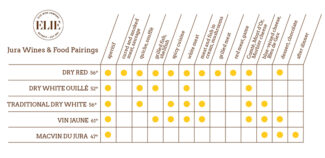
ALSO AVAILABLE FROM THIS ICONIC REGION:
AOP L’Étoile
The well-known ‘star’ of the Jura—named for the star-shaped fossils, gryphées, that can be found in the local limestone-rich soils—is minute in size (185 acres) and in the corresponding production of wine, which is rarely seen outside France. L’Étoile’s terroir, on the other hand, is also seen in Chablis, 110 miles to the northwest. As a result, Chardonnay is the favored varietal in L’Étoile, and like Chablis, these wines are notable for their strikingly fresh minerality. Unlike Chablis, however, Savagnin permitted under the L’Étoile appellation and is used to produce the quintessentially local product, Vin Jaune. It is also blended with Chardonnay to make sweet Vin de Paille, which also contains Poulsard, Jura’s key red grape variety, to add complexity and color. Even so, red wines are not produced under the appellation.
Domaine de Montbourgeau
Jean Gros acceded to the head of the family wine business in 1956; thirty years later, in 1986, his daughter Nicole Deriaux joined the business as vigneronne. Today, she is fully responsible for the domain’s operation, and with three sons waiting in the wings, the baton will likely pass between family members for many years to come. The estate is located in the southwestern part of the Jura, in the commune of L’Étoile (‘the star)—a name that pays homage to the starfish fossils found throughout the appellation. Nicole Deriaux farms twenty acres devoted mostly to Chardonnay, with Savagnin sited in six of those acres and Trousseau and Poulsard rounding out the rest.
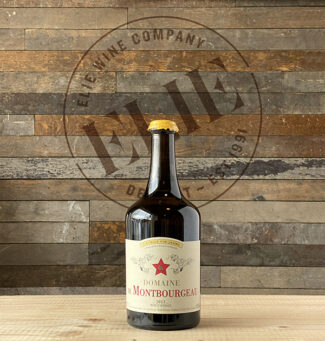 AOP L’Étoile – 2011 L’Étoile Vin Jaune ($89): Befitting the style, this Vin Jaune is 100% Savagnin grown on blue marl rich in limestone. The wine spends one year in small, neutral oak casks followed by six years in larger hogsheads, allowing for the longer, requisite maturation period. The wine displays quince jam notes sheathed in warm, yeasty lemon curd and resonant acidity. Around 3000 bottles made.
AOP L’Étoile – 2011 L’Étoile Vin Jaune ($89): Befitting the style, this Vin Jaune is 100% Savagnin grown on blue marl rich in limestone. The wine spends one year in small, neutral oak casks followed by six years in larger hogsheads, allowing for the longer, requisite maturation period. The wine displays quince jam notes sheathed in warm, yeasty lemon curd and resonant acidity. Around 3000 bottles made.
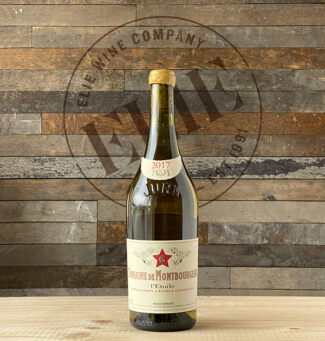 AOP L’Étoile – 2017 ($30):95% Chardonnay with Savagnin topping off the blend, this wine originates on the southeastern slopes of L’Étoile, where vines average 40 years. Following malolactic fermentation, it spends up to three years in neutral oak, giving it what may be considered a ‘typical’ Jura profile for Chardonnay, tasting slightly oxidized, although not nearly in the style referred to locally as ‘sous voile’, or ‘under veil’—referring to the yeasty flor that characterizes Vin Jaune. About 20,000 bottles are produced: It is the winery’s mainstay.
AOP L’Étoile – 2017 ($30):95% Chardonnay with Savagnin topping off the blend, this wine originates on the southeastern slopes of L’Étoile, where vines average 40 years. Following malolactic fermentation, it spends up to three years in neutral oak, giving it what may be considered a ‘typical’ Jura profile for Chardonnay, tasting slightly oxidized, although not nearly in the style referred to locally as ‘sous voile’, or ‘under veil’—referring to the yeasty flor that characterizes Vin Jaune. About 20,000 bottles are produced: It is the winery’s mainstay.
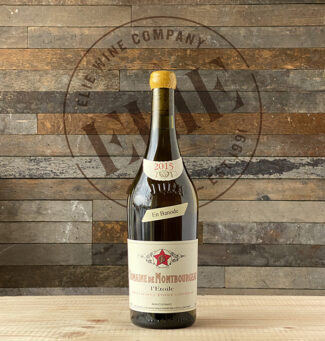 AOP L’Étoile – 2015 ‘En Banode’ ($39): A field blend of Chardonnay and Savagnin from a single plot of white and blue limestone marl where the vines are fifty years old—the estate’s oldest plantings. At 2300 bottles produced, this wine is highly allocated and is only produced in exceptional vintages.
AOP L’Étoile – 2015 ‘En Banode’ ($39): A field blend of Chardonnay and Savagnin from a single plot of white and blue limestone marl where the vines are fifty years old—the estate’s oldest plantings. At 2300 bottles produced, this wine is highly allocated and is only produced in exceptional vintages.
AOP Château-Chalon
In terms of output, the Côtes du Jura is the Jura’s largest sub-appellation and produces wines in a rainbow of hues. It encompasses roughly fifteen-hundred acres and 105 communes, stretching for fifty miles between Champagne-sur-Loue in the north to Saint-Amour in the south.
Despite its size, the terroir of the Côtes is quite homogenous, with local bedrock composed of limestone and marlstone and topsoil alternating between scree and sand that is often rich in mineral clays. The cold winters typical of the region favor tall trellising, to keep the vines away from autumn frosts which regularly occur here in early fall. Savagnin grapes are particularly at risk from this phenomenon, as they must remain on the vine until later in the season to achieve the high levels of ripeness required for the production of Vin Jaune
Jean Bourdy
Dating to the 14th century, Caves Jean Bourdy is today run by brothers Jean-Phillipe and Jean-François, the 15th generation of winemakers at the estate. They farm twenty acres in some of the Jura’s most highly regarded terroirs, included a single acre in Château-Chalon—an appellation dedicated solely to the production of Vin Jaune. Jean Bourdy’s current portfolio includes a multitude of wines of the Jurassic styles, from red blends of Poulsard, Pinot Noir and Trousseau, whites made of Chardonnay or Savagnin to, of course, their much sought-after Château-Chalon. The Bourdys are also known for their wine library and cellar program which has wines from almost every vintage dating back to 1781.
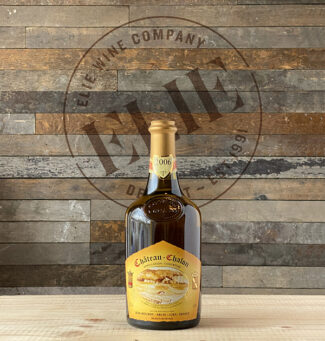 AOP Château-Chalon – 2006 ‘Vin Jaune’ ($170): Jean-François produces wines that are designed for the long haul; he believes that the semi-continental climate in which he works produces wines that need many years before they can be drunk. Typically, Bourdy wines are held back 4-5 years in barrel before they are released. The Château-Chalon ‘Vin Jaune’ is the jewel upon the crown, made without concession exactly as it was made a century ago. The vineyard is certified biodynamic and composted cow manure from their neighbor’s cows is the only fertilizer used, while vine disease is controlled by a mixture of whey and flower teas. The 2006 Château-Chalon has been described as having ‘one of the most complex noses in all the world of wine.’
AOP Château-Chalon – 2006 ‘Vin Jaune’ ($170): Jean-François produces wines that are designed for the long haul; he believes that the semi-continental climate in which he works produces wines that need many years before they can be drunk. Typically, Bourdy wines are held back 4-5 years in barrel before they are released. The Château-Chalon ‘Vin Jaune’ is the jewel upon the crown, made without concession exactly as it was made a century ago. The vineyard is certified biodynamic and composted cow manure from their neighbor’s cows is the only fertilizer used, while vine disease is controlled by a mixture of whey and flower teas. The 2006 Château-Chalon has been described as having ‘one of the most complex noses in all the world of wine.’
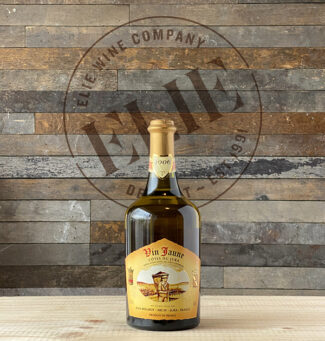 AOP Côtes du Jura – 2006 Vin Jaune ($140): A slightly less exclusive Vin Jaune, yet still in the stratosphere of quality—this wine is a rich, unctuous and rare treat for the dinner table. After many years in barrel under the flor veil, considerable evaporation occurs, and what ends up in the Vin Jaune bottle is just 50% of the fruit that was harvested. The wine is soft upon entry with thick apple-butter notes, but puckering and rich with acidity on the finish, leaving flavors of tart melon and lemon skin.
AOP Côtes du Jura – 2006 Vin Jaune ($140): A slightly less exclusive Vin Jaune, yet still in the stratosphere of quality—this wine is a rich, unctuous and rare treat for the dinner table. After many years in barrel under the flor veil, considerable evaporation occurs, and what ends up in the Vin Jaune bottle is just 50% of the fruit that was harvested. The wine is soft upon entry with thick apple-butter notes, but puckering and rich with acidity on the finish, leaving flavors of tart melon and lemon skin.
Climate Change Threatens Wine, and a Way of Life, in Jura
“It is truly a disaster, and people are angry because there is suddenly so much demand, but not enough wine to sell.”
These prophetic words were uttered by Fabrice Dodane of Domaine de Saint-Pierre in Arbois—they capture a cruel reality that has descended upon the Jura just as the wine world is becoming enamored of the idiosyncratic marvels from this minute corner of France: Climate change. The Jura’s semi-continental climate is built around cold winters and dry summers, and the native varietals that have laid the foundation for the Jura’s unique style require these conditions to thrive. Warmer winters play havoc with budburst, causing early blossoming; a frost can destroy an entire harvest overnight. And the fruit lucky enough to survive spring is often struck by outbreaks of mildew as summers see more rain.
The Fruitiere Vinicole Arbois, a collective of 100 wineries, reports a steady decline in Jura’s output since 2017; while the cooperative typically produces around 475,000 gallons of wine after a normal harvest, in 2017, its yield fell to 185,000 gallons and 2021 brought in only 119,000 gallons. “We are living a true crisis in the Jura,” says Gabriel Dietrich, director of the cooperative. “Some winegrowers weren’t even able to harvest this year, because they had nothing.” This has put tremendous pressure on winegrowers to sustain production, and many are struggling to stay afloat. Four revered winemakers ended their lives this year.
To us, this means that these wonderful wines from one of France’s most remarkable and tiniest regions are all the more precious and all the more worth supporting.
- - -
Posted on 2022.01.17 in Château-Chalon, Macvin du Jura, Jura, Arbois, Macvin du Jra, L'Étoile, France, Wine-Aid Packages
Featured Wines
- Notebook: A’Boudt Town
- Saturday Sips Wines
- Saturday Sips Review Club
- The Champagne Society
- Wine-Aid Packages
Wine Regions
Grape Varieties
Albarino, Albarín Blanco, Albarín Tinto, Alicante Bouschet, Aligote, Altesse, Arbanne, Auxerrois, Barbarossa, barbera, Biancu Gentile, Bonarda, bourboulenc, Cabernet Sauvignon, Calvi, Carcajolu-Neru, Chasselas, Chenin Blanc, Cinsault, Clairette, Cortese, Corvinone, Cot, Counoise, Dolcetto, Erbamat, Fiano, Fromenteau, Fumin, Gamay, Garganega, Garnacha, Garnacha Tintorera, Gewurztraminer, Godello, Graciano, Grenache Blanc, Groppello, Jacquère, Juan Garcia, Lambrusco, Lladoner Pelut, Loureira, Macabeo, Macabou, Maconnais, Malbec, Marcelan, Marsanne, Marselan, Marzemino, Melon de Bourgogne, Mencía, Merlot, Montanaccia, Montepulciano, Montònega, Morescono, Moscatell, Mourv, Mourvèdre, Muscadelle, Muscat, Natural, Nebbiolo, Niellucciu, Parellada, Patrimonio, Pecorino, Pedro Ximénez, Persan, Petit Meslier, Pineau d'Aunis, Pinot Auxerrois, Pinot Blanc, Pinot Gris, Pinot Meunier, Pinot Noir, Pouilly Fuisse, Pouilly Loche, Riesling, Rousanne, Sagrantino, Sangiovese, Sauvignon Blanc, Sciacarellu, Semillon, Sparkling, Sumoll, Tempranillo, Teroldego, Timorasso, Trebbiano, Trebbiano Valtenesi, Ugni Blanc, Verdicchio, Vermentino, Viognier, Viura, Xarel-loWines & Events by Date
- May 2024
- April 2024
- March 2024
- February 2024
- January 2024
- December 2023
- November 2023
- October 2023
- September 2023
- August 2023
- July 2023
- June 2023
- May 2023
- April 2023
- March 2023
- February 2023
- January 2023
- December 2022
- November 2022
- October 2022
- September 2022
- August 2022
- July 2022
- June 2022
- May 2022
- April 2022
- March 2022
- February 2022
- January 2022
- December 2021
- November 2021
- October 2021
- September 2021
- August 2021
- July 2021
- June 2021
- May 2021
- April 2021
- March 2021
- February 2021
- January 2021
- December 2020
- November 2020
- October 2020
- September 2020
- August 2020
- July 2020
- June 2020
- May 2020
- April 2020
- March 2020
- February 2020
- January 2020
- December 2019
- November 2019
- October 2019
- September 2019
- August 2019
- July 2019
- June 2019
- May 2019
- April 2019
- March 2019
- February 2019
- January 2019
- December 2018
- November 2018
- October 2018
- September 2018
- August 2018
- July 2018
- June 2018
- May 2018
- April 2018
- March 2018
- February 2018
- January 2018
- December 2017
- November 2017
- October 2017
- September 2017
- August 2017
- July 2017
- June 2017
- May 2017
- April 2017
- March 2017
- February 2017
- January 2017
- December 2016
- November 2016
- October 2016
- September 2016
- August 2016
- July 2016
- June 2016
- May 2016
- April 2016
- March 2016
- February 2016
- January 2016
- December 2015
- November 2015
- October 2015
- September 2015
- August 2015
- July 2015
- June 2015
- May 2015
- April 2015
- March 2015
- February 2015
- January 2015
- December 2014
- November 2014
- October 2014
- September 2014
- August 2014
- July 2014
- June 2014
- April 2014
- March 2014
- February 2014
- January 2014
- December 2013
- November 2013
- October 2013
- September 2013
- August 2013
- July 2013
- June 2013
- May 2013
- April 2013
- March 2013
- February 2013
- January 2013
- December 2012
- November 2012
- October 2012
- February 2004
Search



